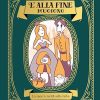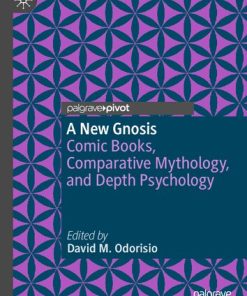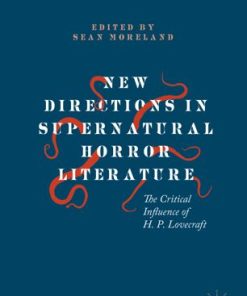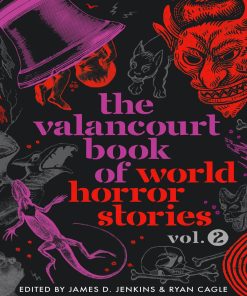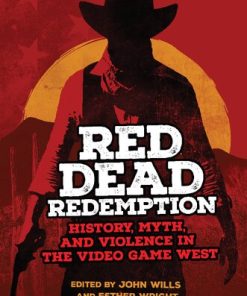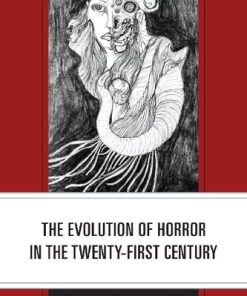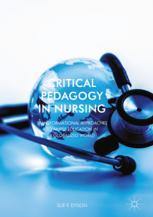Critical Approaches to Horror Comic Books: Red Ink in the Gutter John Darowski 9781000628913 1000628914
$50.00 Original price was: $50.00.$25.00Current price is: $25.00.
Critical Approaches to Horror Comic Books: Red Ink in the Gutter John Darowski – Ebook Instant Download/Delivery ISBN(s): 9781032195704,9781032199443,1032195703,103219944X,2022006759,2022006760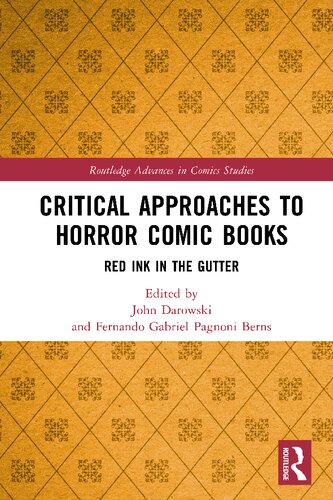
Product details:
- ISBN 10: 1000628914
- ISBN 13: 9781000628913
- Author: John Darowski; Fernando Gabriel Pagnoni Berns
This volume explores how horror comic books have negotiated with the social and cultural anxieties framing a specific era and geographical space. Paying attention to academic gaps in comics’ scholarship, these chapters engage with the study of comics from varying interdisciplinary perspectives, such as Marxism; posthumanism; and theories of adaptation, sociology, existentialism, and psychology. Without neglecting the classical era, the book presents case studies ranging from the mainstream comics to the independents, simultaneously offering new critical insights on zones of vacancy within the study of horror comic books while examining a global selection of horror comics from countries such as India (City of Sorrows), France (Zombillénium), Spain (Creepy), Italy (Dylan Dog), and Japan (Tanabe Gou’s Manga Adaptations of H.P. Lovecraft), as well as the United States. One of the first books centered exclusively on close readings of an under-studied field, this collection will have an appeal to scholars and students of horror comics studies, visual rhetoric, philosophy, sociology, media studies, pop culture, and film studies. It will also appeal to anyone interested in comic books in general and to those interested in investigating intricacies of the horror genre.
Table contents:
1. Introduction
Part I. Horror Comic Books in a Socio-Historical Context
2. From Caligari to Wertham: When EC’s Horror Comics Feared for Their Own Survival
3. “Men Have Sentenced This Fen to Death”: Marvel’s Man-Thing and the Liberation Politics of the 1970s
4. The Horrors Haunting the City of Joy: Analyzing the Traumas of the Counterinsurgency in City of Sorrows
5. Spanish Creepy: Historical Amnesia in “Las mil caras de Jack el destripador”
Part II. Race and Gender in Horror Comic Books
6. “A Sight to Dream of, Not to Tell!”: Orality and Power in Marguerite Bennett and Ariela Kristantina’s InSEXts
7. Gendered Violence and the Abject Body in Junji Itō’s Tomie
8. Lily Renée’s The Werewolf Hunter and the Secret Origin of Horror Comics
9. The Wolf Only Needs to Find You Once: Food, Feeding, and Fear in the Dark Fairy Tales of Emily Carroll
10. Borderland Werewolves: The Horrific Representation of the U.S.–Mexico Border in Feeding Ground
Part III. Adaptation in Horror Comic Books
11. Flesh and Blood: Zombies, Vampires, and George A. Romero’s Transmedia Expansion of the Dead
12. An Alien World: A Comic Book Adaptation of The Willows by Algernon Blackwood
13. Horror Transformed: Tanabe Gou’s Manga Adaptations of H. P. Lovecraft
14. Mutant Gothic: Marvel’s Mainstreaming of Horror in Uncanny X-Men
15. Franken-Castle: Monster Hunters, Monstrous Masculinities, and the Punisher
Part IV. Horror Comic Books and Philosophy
16. Dylan Dog’s Nightmares: The Unheimlich Experience of the Doppelgänger in Dylan Dog’s World
17. Messages of Death: Haunted Media in “Kaine: Endorphins – Between Life and Death”
18. Heterotopia and Horror at Show’s End
19. The Hell Economics of Zombillénium
People also search:
critical race theory books
horror books for beginners
critical analysis of a novel example
comic horror books
action horror comics
You may also like…
Comics & Graphic Novels - Comic Books - History & Criticism
Arts - History & Criticism
Social Science
The Many Lives of the Batman: Critical Approaches to a Superhero and his Media 1st Edition
Arts - Architecture
Computers - PC & Video Games
Romance - Paranormal Romance
Education Studies & Teaching


